Attitudes of the population to structural change and densification in the greater Zurich area
December 21, 2016 – Alex Martinovits
In the case of important topics such as "housing", in addition to the "hard" facts, the subjective attitudes and perceptions of the population are also central. For this reason, questions have been asked in the city of Zurich as part of the periodic population survey since 1999. Since there are no comparable assessments of the population on the subject of housing at the regional level so far, Stadtentwicklung Zürich has collected some questions on the subject of housing outside the city of Zurich and had them evaluated for the area of Regional Planning Zurich and surroundings (RZU). The area of the RZU includes the city of Zurich and the six adjacent planning regions (Figure 1; further explanations at the end of the article). Of particular interest are the differences between different types of municipalities (explanations of the community typology also at the end of the article).
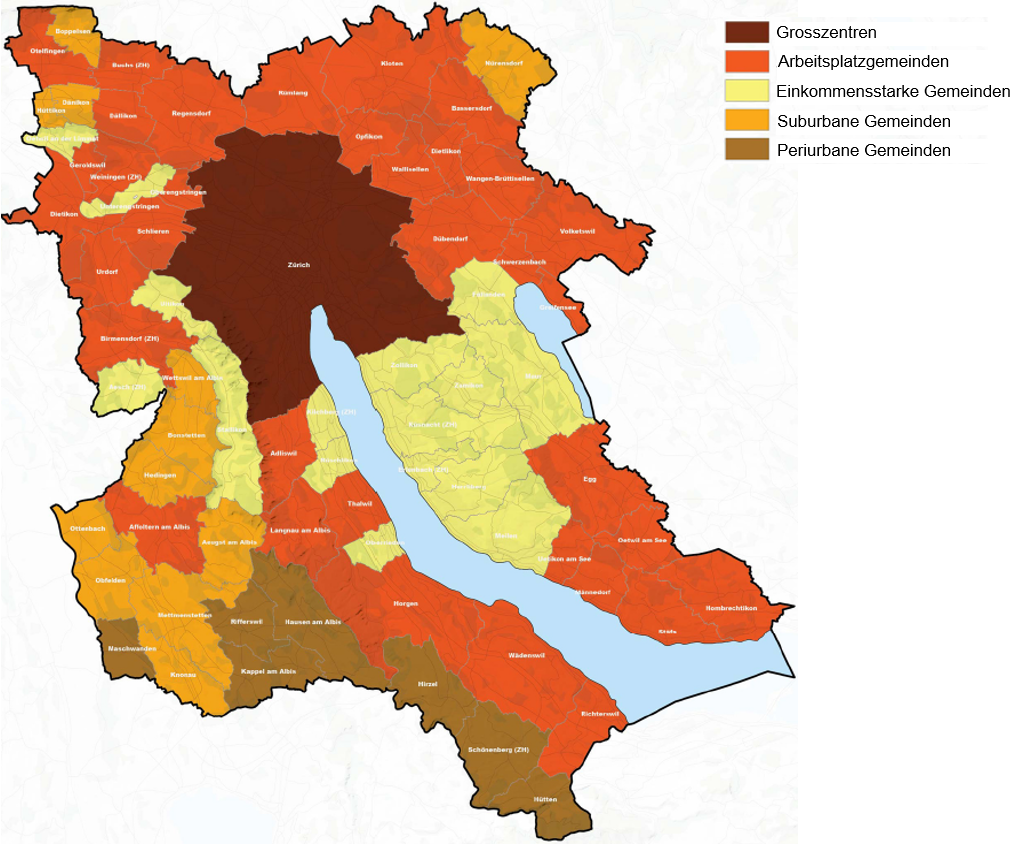
The results will be published in two web articles. This web article sheds light on attitudes to structural changes and densification. The other web article on the same survey is dedicated to the perception of the problem and the attitudes of the population to the housing situation.
Creating more living space through structural change
The creation of more living space in response to the scarce supply is clearly advocated in all types of municipalities. This is most evident in the core city of Zurich (identical to the "large centres" type of municipality in the present evaluations), followed by the workplace municipalities (Figure 2).
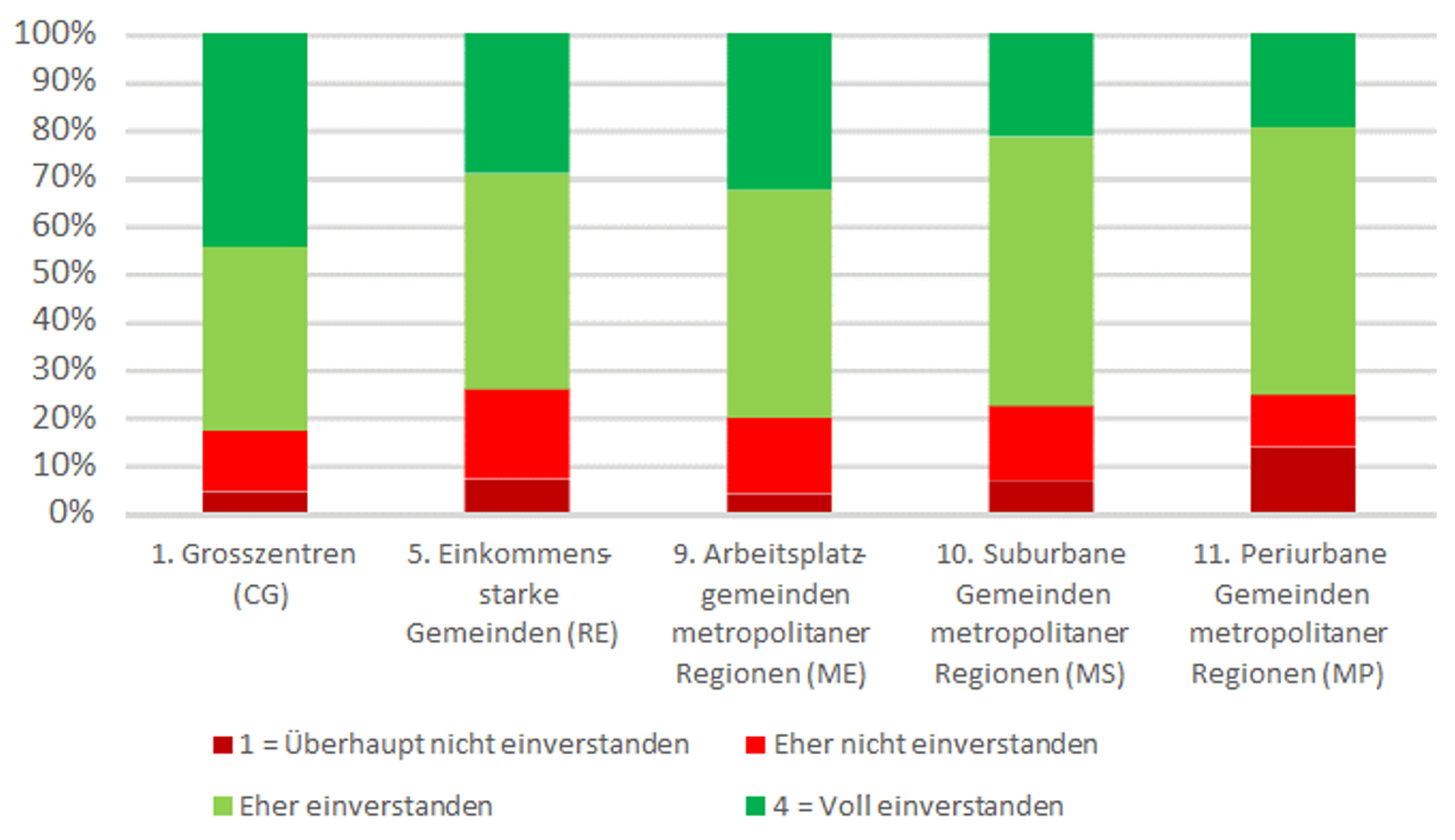
Evaluation of aspects of structural change
The expansion of the offer has resulted in structural changes, which are associated by the population with various advantages and disadvantages.
A majority of respondents think that the construction activity of recent years has made their own residential community (or city) more beautiful and livable (Figure 3). An even stronger majority, on the other hand, is of the opinion that one should preserve the quarters in one's own residential community as far as possible as they are (Figure 4). Similarly clear support is found in the statement that it is a pity that more and more open spaces have been lost as a result of construction activity (Figure 5). A majority also supports the statement that many new buildings and renovations are too luxurious for their own taste (Figure 6).
Despite clear agreement to an expansion of the housing supply, some effects of this expansion are therefore viewed critically.
Attitudes towards these changes are most critical in high-income municipalities: On the one hand, there is the lowest agreement with the statement that the community has become more beautiful and livable through construction activity (Figure 3). On the other hand, the statement that the quarters should be preserved as they are is most supported (Figure 4). All other types of municipalities are less critical of change in this respect.
With regard to the finding that more and more open spaces are being lost as a result of construction activity, the differences between the types of municipalities are small and hardly significant. Here, the approval rate in all types of municipalities is just under 70 % (Figure 5).
The perception that many new buildings and renovations are too luxurious is more common in the core city of Zurich and in the workplace communities than in the other types of municipalities (Figure 6).
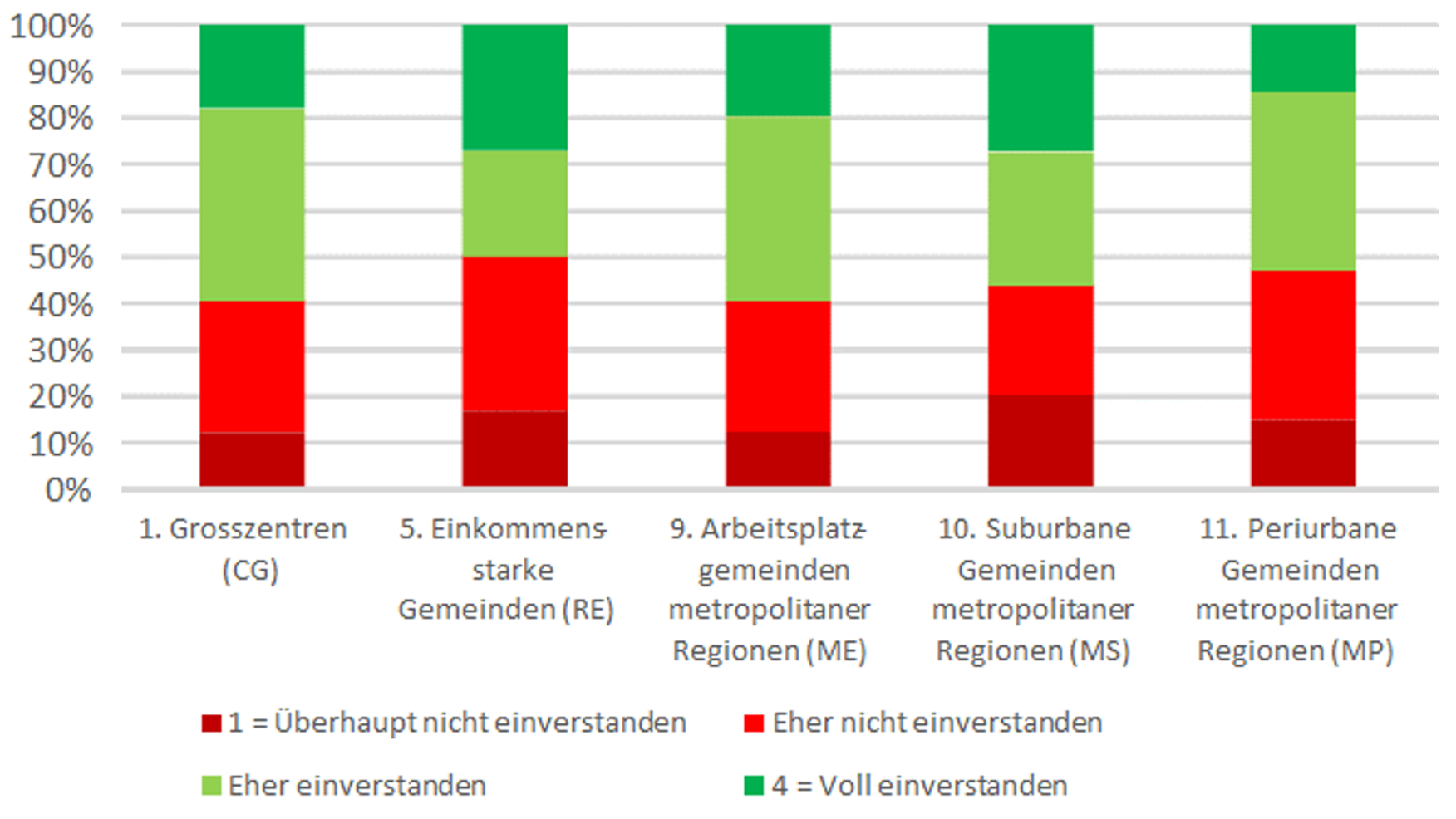
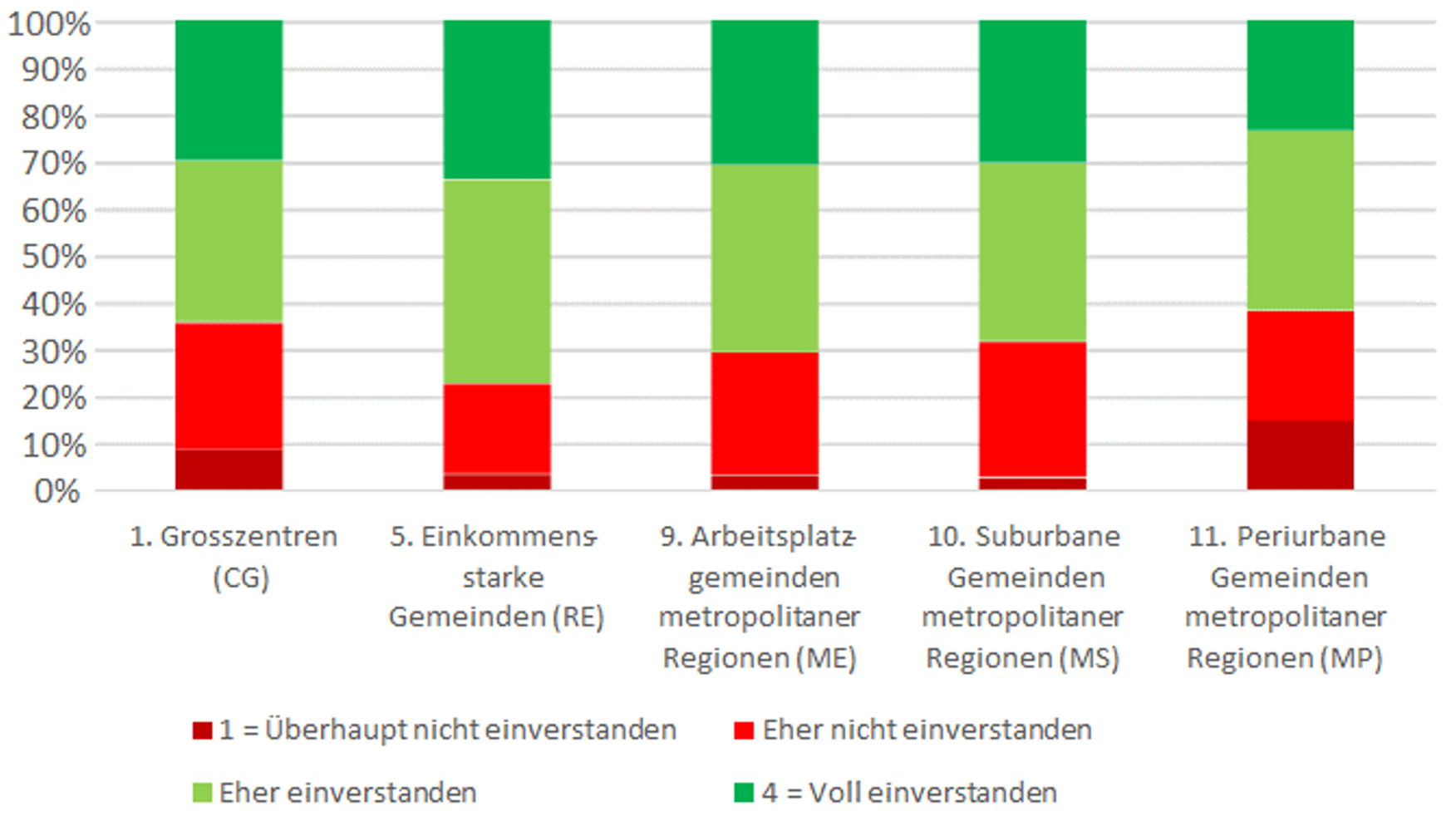
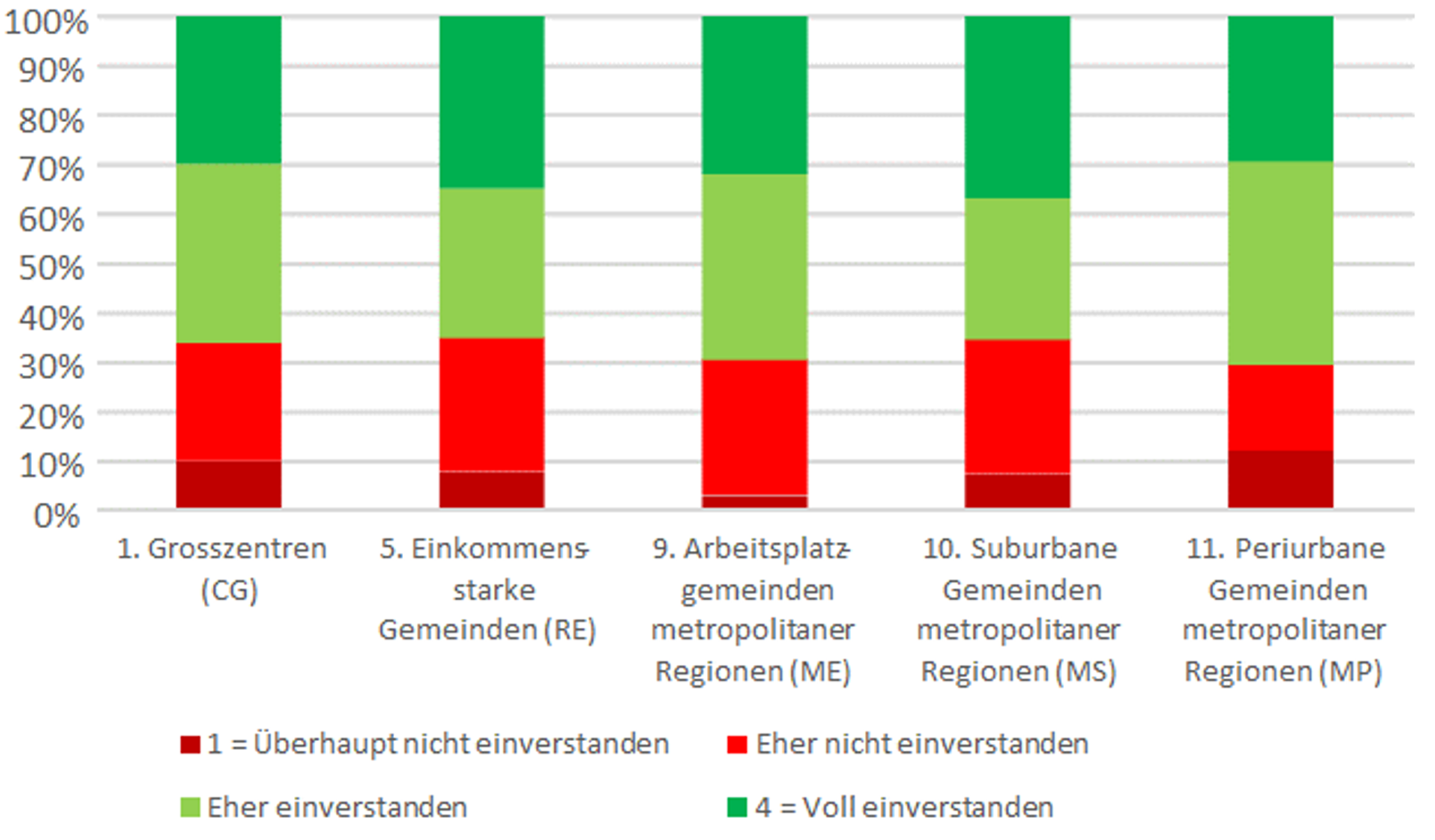
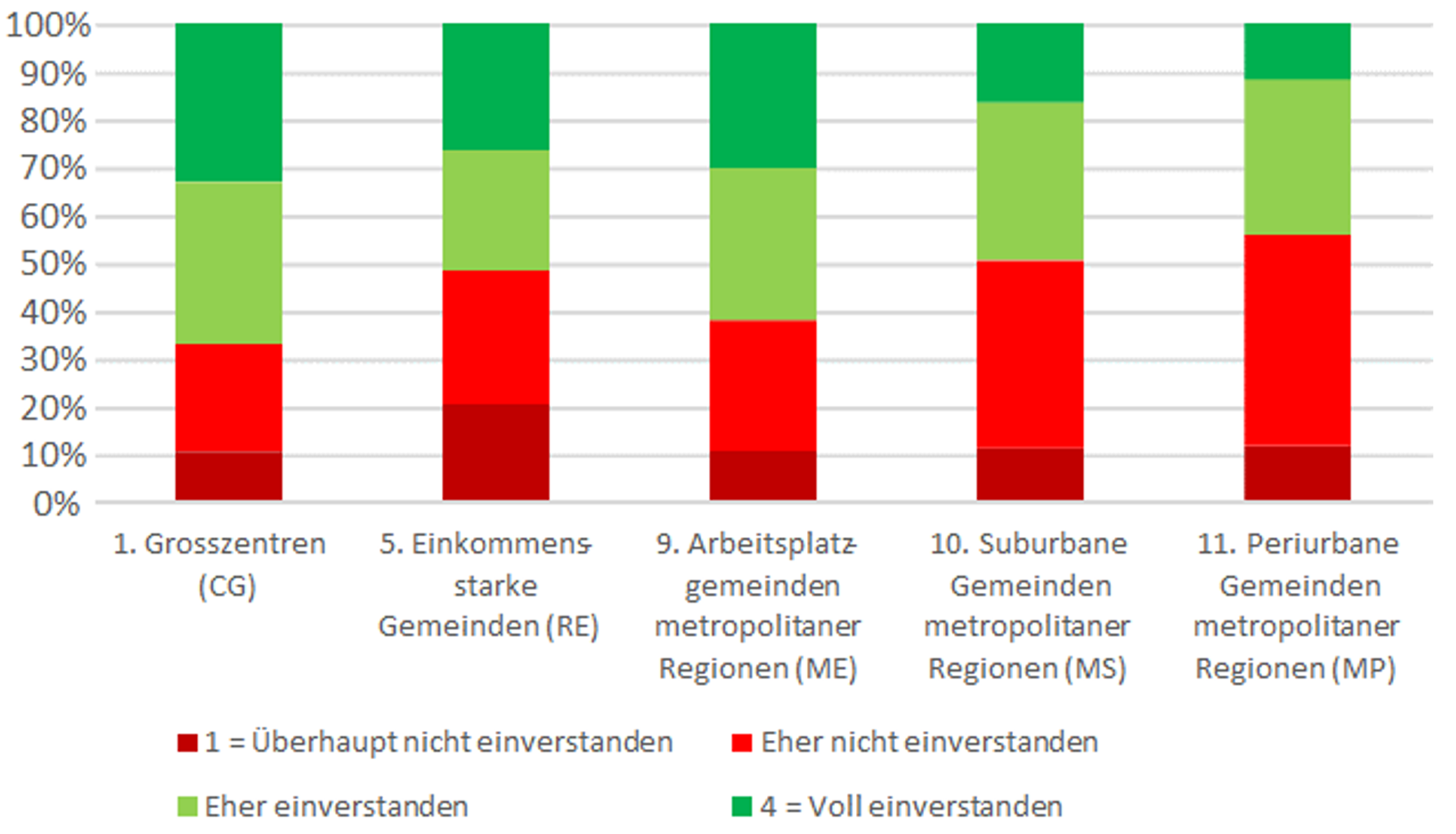
Structural changes are advocated, but sensitivity is needed
A clear majority of respondents are in favour of expanding the housing supply. A majority is also of the opinion that the construction activity of recent years has made their own residential community more beautiful and livable. Thus, the existing housing dynamics are basically supported. At the same time, however, some of the effects of this expansion are critically assessed (change in the districts, loss of open spaces, luxurious new buildings and renovations). This indicates that an approach sensitive to the needs of the population and carefully adapted to local conditions is important in the further internal development of cities and villages.
The greatest scepticism about change exists in the high-income communities. At the same time, significantly more people in these municipalities than in the other municipalities consider their apartments to be outdated (see web article "Attitudes of the population to the housing situation in the greater Zurich area"). This controversial situation – on the one hand a widely recognized need for renewal and on the other hand a widespread scepticism about the effects of structural renewal – requires a special sensitivity in these communities to any replacement new buildings. In high-income communities, as is well known, there is often a high proportion of rather loose forms of development. A study by the Office for Spatial Planning of the Canton of Zurich (see bibliography) also showed that the residents of loose forms of development tend to be more critical of structural densification than elsewhere.
More information
Method / Sources
The underlying survey was conducted on behalf of Stadtentwicklung Zürich by the research institute gfs-Zürich throughout the canton of Zurich. In the Omnibus survey, questionnaires from several clients were combined into an overall survey.
The CATI Bus Zurich was conducted as a telephone survey. The selection was carried out by means of random quota procedures. The quality assurance was supported by audio recordings of all interviews and constant supervision.
The survey took place between 29 February and 19 March 2016. A total of 1009 people aged 18 and over were interviewed, 305 in the city of Zurich, 347 in the rest of the RZU region and 357 in the rest of the canton of Zurich.
The sample sizes do not allow to interpret small differences between subgroups. Only large, significant differences may be interpreted. This article is limited to appropriate interpretations. With a sample size of around 1000 respondents, the true value of a 50% expression is no more than 2.5%, and the true value of a 20% or 80% expression is no more than 3.2% away from the stated value. With a smaller subgroup of around 300 respondents (for example, for the city of Zurich alone). The true value of a 50% expression is not more than 5.8%, and the true value of a 20% or 80% expression is not more than 4.6% from the stated value. These statements apply with 95% certainty.
Terms
Regional Planning Zurich and surroundings (RZU)
The present analysis covers the area of Regional Planning Zurich and the Surrounding Area (RZU), which includes the most closely networked spatial planning regions of the canton with the core city of Zurich. These include the spatial planning regions of the city of Zurich, Furttal, Glattal, Limmattal, Pfannenstil, Knonaueramt and Zimmerberg.
Municipal typology 22 of the Federal Statistical Office
The results of the survey were evaluated according to five different types of municipalities, based on the municipal typology 22 of the Federal Statistical Office (FSO). This was developed by a team of researchers from the EPFL on behalf of the FSO. The approximately 3000 municipalities in Switzerland were classified according to a centre-periphery concept and various criteria according to 22 types of municipalities and updated on the basis of the 2000 census. There are only five of these 22 types of municipalities in the RZU area. After these, the results were evaluated. In the report, the terms "core city" and "city of Zurich" are also used as synonyms for the former type of municipality "large centre".
Existing rents
The existing rents include all rental prices of all existing rental properties. This is in contrast to the offered rents, which only include the small part of the rental properties publicly advertised on the market.